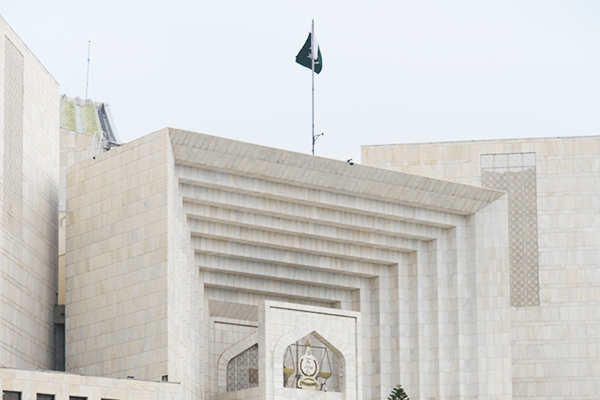
File photo. Farooq Naeem—AFP
A recent audio leak of a conversation between former chief justice of Pakistan (CJP) Saqib Nisar and Khawaja Tariq Rahim, one of PTI chief Imran Khan’s lawyers, has once again raised questions over the politicization of the senior judiciary. As his legacy, Nisar bequeathed to Pakistan an apex court tainted with political bias that the judiciary is meant to be free of—and the call echoes this. In the brief audio, the former CJP can be heard “advising” Rahim to file a contempt petition against Prime Minister Shehbaz Sharif over the government’s refusal to release funds for elections in Punjab, echoing the PTI’s desire to send the PMLN leader home. Contrary to usual practice, Nisar has not denied the contents of the audio, describing it as a “theft of my fundamental rights” to a local media outlet. “I have my views on legal matters and can discuss them with anyone and everyone seeking advice or just trying to take my input. What is wrong in it? If not, why call it a controversy?” he added.
There is no doubt that Pakistan’s senior judiciary has gone through periods of “decline,” with the “normal function” of impartial courts increasingly the exception rather than the norm. Most glaring was the conduct of Iftikhar Chaudhry during his time as CJP, which set the stage for the current polarization. Serving as judge, jury, and executioner all rolled into one, Chaudhry craved the limelight. He would issue Islamic and anticorruption bromides, playing to the press gallery as a wrecking ball who meticulously demolished all perceived enemies, regardless of law. His selective interpretation of law was never in question; despite their eventual falling out, Chaudhry was also one of the judges who validated and legitimized Pervez Musharraf’s 1999 coup against then-prime minister Nawaz Sharif.
In this context, it is useful to compare the current impasse between the government and judiciary with the 2007 lawyers’ movement. After his restoration as CJP, Chaudhry’s “activism” quickly triggered criticism from lawyers, even as it was welcomed by laymen (much like the PTI supporters who support CJP Umar Ata Bandial). Observers felt Chaudhry was steering the historically meek Supreme Court toward “some independence,” pointing to similar judicial overdrive in neighboring India and Bangladesh. This comparison is not available to the incumbent Supreme Court, nor are the crises that confronted them. A string of controversial rulings—all from the same judges—has left today’s Supreme Court morally isolated as it appears to favor a popular political wave. The consequences of this perceived bias will not cover the institution with glory.
